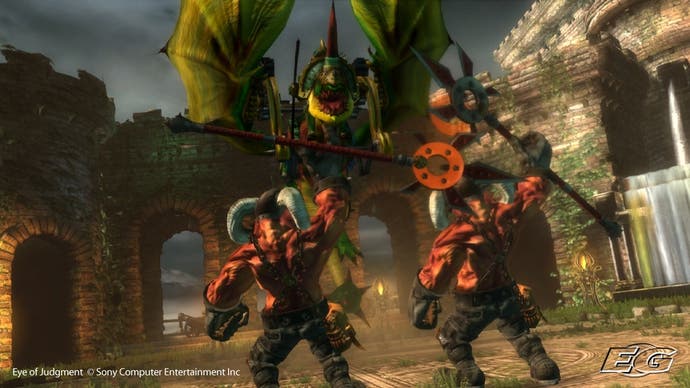PlayStation 3: 2007's Most Wanted
The PS3 comes of age?
Singstar PS3
- Gamepage
- Screenshots
- Release Date: TBC
Sony Studio London's clean and inviting menus and user interface reflect the game's modern, mainstream and graphic design-savvy awareness. Indeed, the well-ordered and sleek screenshots of the Singstore put most other videogame front ends to shame.
And it's the Singstore that most clearly communicates the game's evolution from its current interminable mix-tape treadmill of PS2 releases. In addition to the 30 tracks included on the disc you'll be able to download new songs quickly and easily from myriad artists in diverse genres and styles. This propels the game into iTunes territory allowing users to construct their own game from a gigantic catalogue of musical options (350 at launch with 50 a month added thereafter).
Online high-score tables are a fantastic development for players who want to compete but prefer to sing alone while Singstar's established mechanics will provide the all-important bedrock for these ideas and inventions to build upon.
Eye of Judgment
- Gamepage
- Screenshots
- Release Date: Autumn 2007
Sony's Eyetoy camera promised so much upon release in 2003 but it has mostly failed to deliver anything important or indispensable to the gaming canon. The PlayStation Eye, Eyetoy's PS3 update is looking to break out of the passable mini-game monotony that plagued its forbear with the Eye of Judgement.

The game comes bundled with a tablemat upon which players place and move cards to carry out their moves on screen. By holding cards up to the camera health points, attack points, special abilities and effects can all be checked and the game will ship with a starter pack of 30 cards.
This style if gaming has recently become wildly popular in Japanese arcades but this will be the first time it's been used in a console game. The game's producers have said that they spent a full two years working on the game mechanics and Eye technology before they started on implementing the graphics. With that in mind, one can only hope that such a hefty investment of time and energy ensures the game is more than just a cute curio with a neat gimmick.
Half Life Episode 2
- Gamepage
- Screenshots
- Release Date: Winter 2007
The game opens with idiosyncratic geek protagonist Gordon riding the very same train carriage that took him and Alyx off into the end credits of Episode 1. This feeling of continuity and uninterrupted narrative defines Half Life Episode 2, the second game in a trilogy of episodic releases now spread across PC, PlayStation 3 and 360.

Boasting a new 'cinematic physics system' which presumably improves on the astounding physics system which saw items bouncing and flying around so gracefully in its predecessor, Episode 2 promises to build an as yet unrivalled suspension of disbelief in players' minds. New enemies, such as the tripod walking 'Hunter' can be defeated with new weaponry and Valve is promising more emphasis on the puzzles which were so scarce in Episode 1. As a counterpoint to Halo, the Half-Life games offer a different weight and flavour of First Person Shooter but one which is no less enthralling in style or substance.




.png?width=291&height=164&fit=crop&quality=80&format=jpg&auto=webp)



